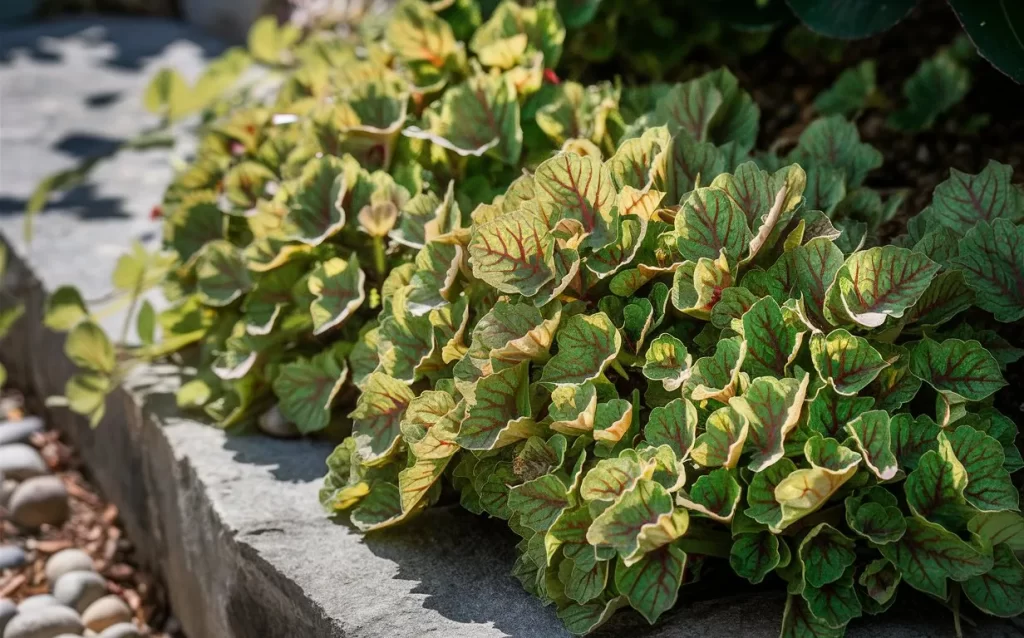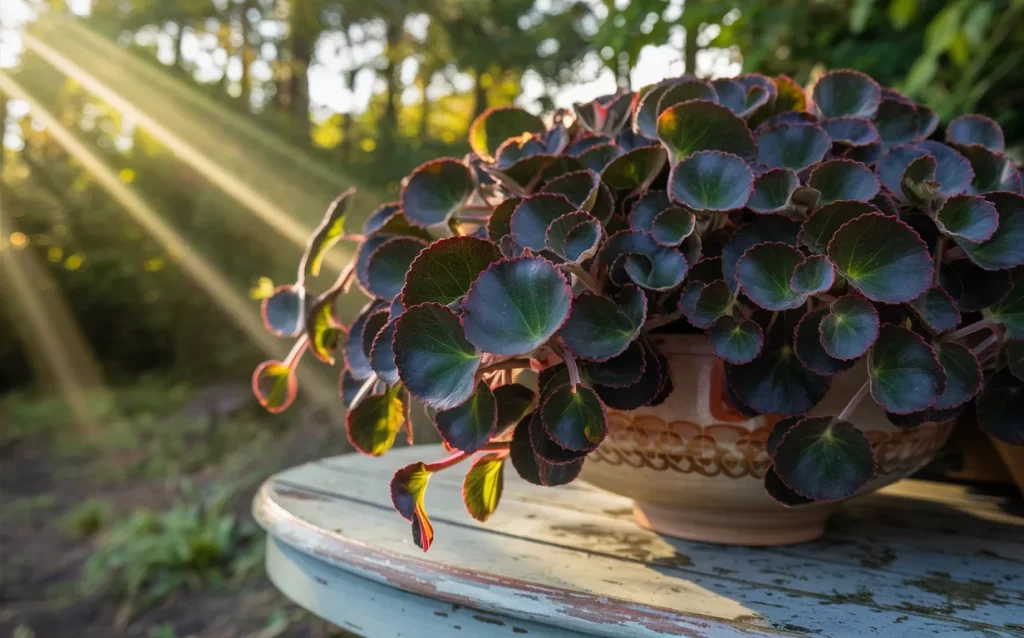
Are you looking to add a versatile and eye-catching plant to your aquarium? Look no further than the moneywort plant. This little gem, also known as Bacopa monnieri, is not only easy to care for but also offers numerous benefits for your aquatic environment. Whether you’re a seasoned aquarist or a beginner, this comprehensive guide will provide you with all the information you need to successfully care for your moneywort plant, including tips on propagation and its surprising benefits as a ground cover.
Key Takeaways:
- Moneywort, also known as Bacopa monnieri, is a popular and versatile plant for aquariums.
- It adds aesthetic appeal with its bright green foliage and occasional blossoms.
- Moneywort helps replicate natural habitats for fish, stabilizes water conditions, and provides shelter for fry.
- The plant has a moderate growth rate and requires specific care parameters, including lighting and water parameters.
- Moneywort is compatible with most freshwater fish and invertebrates, but some plant-eating species should be avoided.
The Benefits Of Having Moneywort in Your Tank

Moneywort, also known as Bacopa monnieri, is a versatile and beneficial plant to have in your aquarium for several reasons.
Aesthetic Appeal
Moneywort adds a touch of natural beauty to your tank with its bright green foliage and occasional blossoms. Its vibrant color can create a visually striking display, enhancing the overall aesthetic appeal of your aquarium.
Replicating Natural Habitats
Having moneywort in your tank helps to replicate natural habitats for fish. The plant creates a lush environment, simulating the conditions found in the wild. This is especially beneficial for fish species that prefer densely vegetated areas.
Water Condition Stabilization
Moneywort utilizes nutrients produced by fish waste, helping to stabilize water conditions. The plant absorbs excess nutrients such as nitrates, phosphates, and ammonia, reducing the risk of algae blooms and promoting a healthier tank environment.
Shelter for Fry
If you have breeding tanks or want to encourage the growth of fry, moneywort provides excellent shelter. The dense foliage and intricate branching structure offer a safe haven for fry to hide and thrive, increasing their chances of survival.
Oxygenation and pH Stabilization
Moneywort plays a significant role in oxygenation by releasing oxygen into the water during photosynthesis. This helps to maintain proper oxygen levels for fish and other aquatic inhabitants. Additionally, the plant helps to stabilize pH levels, creating a more suitable and consistent environment for your tank.
In summary, having moneywort in your tank not only adds aesthetic appeal but also provides numerous benefits for both your fish and the overall tank ecosystem. From replicating natural habitats to stabilizing water conditions, this versatile plant contributes to the overall health and success of your aquarium.
Appearance and Growth Rate of Moneywort Plant
Moneywort, also known as Bacopa monnieri, is a stemmed plant with bright green, thick, and fleshy leaves. The leaves grow on both sides of the stem, giving the plant a relatively thin width of about two inches. Its vibrant green color adds a refreshing touch to any aquarium.
When grown in aquariums, moneywort typically reaches a height of about 12 inches, creating a lush and eye-catching display. However, in the wild, it can grow even taller, showcasing its impressive growth potential. Its moderate growth rate of approximately an inch per month makes it a manageable plant to maintain.
Moneywort’s vibrant appearance and moderate growth rate make it an excellent choice for aquarium enthusiasts looking to add visual interest and a touch of nature to their tanks.
Moneywort Care in your Aquarium
Moneywort is a relatively low-maintenance plant that thrives in aquarium environments. By providing the right conditions, you can ensure the health and vibrancy of your moneywort plant. Here are some key aspects of moneywort care to keep in mind:
Tank Size and Space Requirements
While moneywort does not have strict space requirements, it is recommended to keep it in an aquarium with a volume of at least 10 gallons. This will provide enough space for the plant to grow and flourish without crowding the tank. Remember to consider the needs of your fish and other aquatic inhabitants when determining the tank size.
Water Parameters
Moneywort thrives in temperatures ranging from 72 to 82 degrees Fahrenheit. It prefers a slightly acidic to neutral pH range of 6.0 to 7.5 and water hardness between 5 to 20 KH. Maintaining stable water parameters is crucial for the health of your moneywort plant.
Lighting Requirements
Moneywort requires moderate lighting to support its growth and well-being. Aim for a lighting duration of 10 to 12 hours per day to give your plant enough light energy for photosynthesis. Adjust the intensity and spectrum of your aquarium lights to meet the needs of the moneywort plant.
Substrate and Planting
Moneywort can be planted using aquarium soil or a combination of sand and gravel. Ensure that the chosen substrate provides proper anchoring for the roots and allows for nutrient absorption. Plant the moneywort by gently inserting the stem into the substrate, making sure the roots are covered. Avoid burying the stem too deeply.
Regular Trimming
To maintain the overall shape of your moneywort plant and prevent excessive growth, regular trimming is necessary. Use clean and sharp aquarium trimming scissors to remove any overgrown or damaged portions. Trimming also helps promote bushier growth and prevents the plant from overshadowing other aquarium inhabitants.
By following these guidelines, you can provide optimal care for your moneywort plant, ensuring it thrives in your aquarium. Remember to monitor water parameters, lighting, and perform regular maintenance to keep your moneywort healthy and beautiful.
Tank Mates for Moneywort

Moneywort is a versatile and adaptable plant that can thrive alongside various freshwater fish and invertebrates in your aquarium. It offers not only aesthetic appeal but also serves as a natural habitat and a source of shelter for your aquatic pets, especially fry and smaller species. However, it’s essential to consider the compatibility of tank mates to ensure the well-being of both the moneywort plant and the other inhabitants of your tank.
When selecting tank mates for your moneywort, avoid species known to be plant-eaters, such as Buenos Aires tetra, as they may damage or consume the plant. Additionally, larger fish species that have the potential to uproot plants should be avoided to prevent any disruptions to the moneywort’s growth and stability within the tank.
On the other hand, goldfish typically leave moneywort plants unharmed due to the thickness of their leaves. This makes goldfish compatible tank mates for moneywort, and they can coexist peacefully in the same aquarium.
By choosing compatible tank mates for your moneywort, you can create a harmonious and visually pleasing underwater environment while ensuring the plant’s growth and well-being.
Some recommended tank mates for moneywort include:
- Tetras
- Guppies
- Platies
- Danios
- Rasboras
- Corydoras Catfish
- Shrimp
- Snails
Make sure to research the specific requirements and behaviors of each species to ensure they are compatible with your moneywort plants.
Moneywort Propagation
Moneywort is a versatile and adaptable plant that can be easily propagated, allowing you to expand your collection or share it with fellow aquarists. There are two common methods for propagating moneywort – through stem cuttings and side shoots.
Propagation through Stem Cuttings
One way to propagate moneywort is through stem cuttings. To do this, carefully clip a healthy stem just below a leaf node using clean scissors or pruning shears. Make sure the cutting is about 2-3 inches long. Remove any leaves from the lower part of the stem to prevent them from rotting underwater.
Tip: It is best to take stem cuttings from the upper parts of the plant, as they tend to root more easily.
Once you have your stem cutting ready, plant it in the substrate of your aquarium, ensuring that at least one leaf node is buried. This is where the roots will develop. Maintain a temperature of around 75-80 degrees Fahrenheit to promote root growth. It should take a few weeks for the cutting to develop roots and grow into a new moneywort plant.
Propagation through Side Shoots
An alternative method for propagating moneywort is through side shoots. As the plant grows, it will produce small side shoots from the leaf nodes. Allow these shoots to grow until they are about 2-3 inches long.
Tip: You can use plant weights or hairpins to help the side shoots stay in contact with the substrate while they develop roots.
Once the side shoot has reached the desired length, carefully cut it off from the main stem, ensuring that at least one leaf node is still intact. Plant the side shoot in the substrate, burying the leaf node to encourage root development. With proper care and maintenance, the side shoot will develop roots and grow into a new moneywort plant.
By utilizing these propagation methods, you can easily multiply your moneywort plants, creating a lush and vibrant aquatic environment in your aquarium.
Conclusion
Moneywort is a versatile and beneficial plant, making it a valuable addition to any aquarium. With proper care and maintenance, this plant can thrive and enhance the overall aesthetic appeal of your tank. Its bright green foliage and occasional blossoms add a touch of natural beauty to the aquatic environment.
Not only is moneywort visually appealing, but it also plays a crucial role in providing a natural habitat for fish. The plant helps to replicate their natural ecosystems and provides shelter for fry, making it ideal for breeding tanks. Additionally, moneywort stabilizes water conditions by utilizing nutrients produced by fish waste, promoting a healthier and more balanced tank environment.
To enjoy the beauty and benefits of moneywort in your aquarium, it is important to follow proper care guidelines. This includes providing adequate tank size, maintaining appropriate water parameters, ensuring moderate lighting, and using suitable substrate. Regular pruning will help control its growth and maintain its shape.
Propagation of moneywort is relatively easy and can be achieved through stem cuttings or by allowing side shoots to develop. By following the guidelines and tips provided in this guide, aquarists of all levels of experience can successfully grow and propagate moneywort, adding a touch of vibrancy and natural harmony to their aquariums.
Recommended
> Best Shrimp Food Choices for Healthy Aquatic Pets
